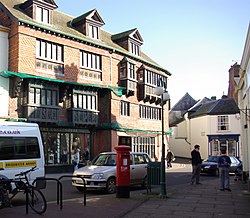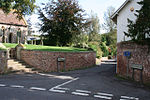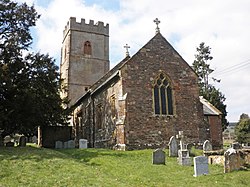Church of St Andrew, Wiveliscombe
Grade II* listed buildings in Taunton DeaneGrade II* listed churches in SomersetWiveliscombe

The Church Of St Andrew in Wiveliscombe, Somerset, England was built in 1829. It is a Grade II* listed building.
Excerpt from the Wikipedia article Church of St Andrew, Wiveliscombe (License: CC BY-SA 3.0, Authors, Images).Church of St Andrew, Wiveliscombe
Church Street,
Geographical coordinates (GPS) Address Website External links Nearby Places Show on map
Geographical coordinates (GPS)
| Latitude | Longitude |
|---|---|
| N 51.0411 ° | E -3.3097 ° |
Address
St. Andrew's Church
Church Street
TA4 2LT
England, United Kingdom
Open on Google Maps








